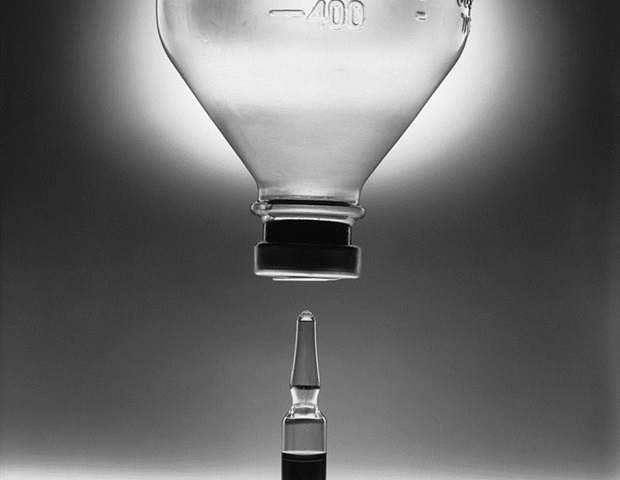



In a recent study posted to the bioRxiv* preprint server, researchers assessed the impact of Bacillus Calmette-Guérin (BCG) vaccination on the protection provided by severe acute respiratory syndrome coronavirus 2 (SARS-CoV-2) vaccination.


Background
Despite medical treatments and several licensed vaccines, the coronavirus disease 2019 (COVID-19) pandemic has entered its third year. The most promising preclinical strategy involves intranasal (i.n.) vaccines, theoretically capable of triggering local mucosal immune reactions in the respiratory tract to curb SARS-CoV-2 entry and restrict viral replication at the initial infection site.
Nevertheless, while certain COVID-19 vaccines are in their phase I/II clinical trials, the effectiveness of this strategy has proven elusive to date. However, the consequences of earlier vaccines and infections are yet to be considered in these models.
About the study
In the present study, researchers examined the immunomodulatory influence of Mycobacterium bovis BCG pre-immunization on a subsequent vaccination with SARS-CoV-2 spike protein expressing i.n. Ad vaccination, or Ad(Spike).
To assess the long-term protection afforded by intramuscular vaccination, the team engineered a replication-deficient human adenovirus serotype five that expressed the full-length S-protein of the SARS-CoV-2 ancestral strain that was codon optimized for expression in mouse and human cell lines. The team vaccinated female C57BL/6 mice intranasally with phosphate-buffered saline (PBS) or median tissue culture infectious dose (TCID50) Ad(Spike).
The effectiveness of a prime-boost immunization schedule with BCG was also studied. Female C57BL/6 mice were inoculated intraperitoneally (i.p.) with 106 colony-forming units (CFU) of the BCG strain harboring an empty plasmid (BCG(e)) one month before i.n. immunization with Ad(Spike). In place of BCG(e) and Ad(Spike), PBS was administered to the naive controls.
The team first examined the likelihood that BCG could elicit non-specific protection against COVID-19 in the animal model since human data can be ambiguous. Two months later, animals were challenged with SARS-CoV-2 after being pre-vaccinated with BCG(e) and then vaccinated with an adenoviral vector comprising an empty gene cassette (Ad(e)).
The team also quantified the daily fluctuation in viral replication and infectious particles present in oral swabs and pulmonary tissue of SARS-CoV-2-infected mice. This was to determine the influence of prior BCG injection on the longevity of the Ad(Spike) vaccine six months after immunization. Six months after Ad(Spike) immunization, the extent of lung injury was evaluated both with and without BCG pre-vaccination.
Results
Two months following vaccination, Ad(Spike)-immunized mice demonstrated a substantial reduction in generating infectious SARS-CoV-2 in oral samples. However, when challenged with SARS-CoV-2 six months after vaccination, virus titers noted in vaccinated subjects were similar to those in unvaccinated mice.
Also, infectious viral titers and SARS-CoV-2 ribonucleic acid (RNA) were examined in the lungs of the infected six months after vaccination. The results did not display any statistical difference from those of unvaccinated mice, which was in contrast to that observed in mice challenged two months after vaccination, which revealed significant differences. These results indicated that the protection against infection triggered by one dose of the Ad(Spike) vaccine was temporary and diminished with time.
The absence of a significant decrease in infectious viral titers or viral RNA in lungs or oral swabs of BCG-vaccinated mice relative to PBS controls confirmed that the BCG vaccine did not elicit remarkable non-specific protection to infected mice. One Ad(Spike) dose could decrease infectious viral particles in oral swabs one and three days after infection. However, mean viral titers were considerably lower among animals that were BCG-pre-immunized.
The team also discovered that by six months after vaccination, while one Ad(Spike) dose was effective in lowering viral burden in comparison to controls, this decrease did not have statistical significance. While Ad(Spike) retained some protective impact after six months, one BCG dose before Ad(Spike) vaccination enhanced its capacity to monitor viral replication in the respiratory tract.
Lung pathology scoring revealed a statistically significant decrease in cellular and tissue damage (CTL), inflammatory patterns (RIP), and circulatory/vascular damage (CVL) in all Ad(Spike)-vaccinated animals, which was not boosted by BCG pre-immunization.
However, there were no discernable differences in the protective influence of the BCG vaccine since both cohorts exhibited a significant decrease in lung pathology. Altogether, these results demonstrated that while one Ad(Spike) vaccine dose was ineffective at preventing infection, it provided considerable protection against SARS-CoV-2-associated severe lung pathology for up to six months after immunization.
Conclusion
The study findings demonstrated a novel vaccination strategy that can potentially prevent viral pandemics by enhancing the long-term effectiveness of a next-generation Ad-vectored mucosal vaccine when administered with the BCG vaccine.
The researchers believe these techniques may provide an effective solution to allow more rapid distribution of life-saving vaccines among developing countries where BCG is already a part of the vaccination programs. Additionally, the combination of BCG may aid in addressing safety concerns regarding adenoviral-based vaccines since it may permit a shortened dose schedule or a lower viral titer required for successful vaccination.










%2c_3D_illustration._A_virus_transmitted_by_mosquito_and_caus_-_Kateryna_Kon_M1_cd7c644c9e204869b1de65dd2f361793-620x480.jpg)


